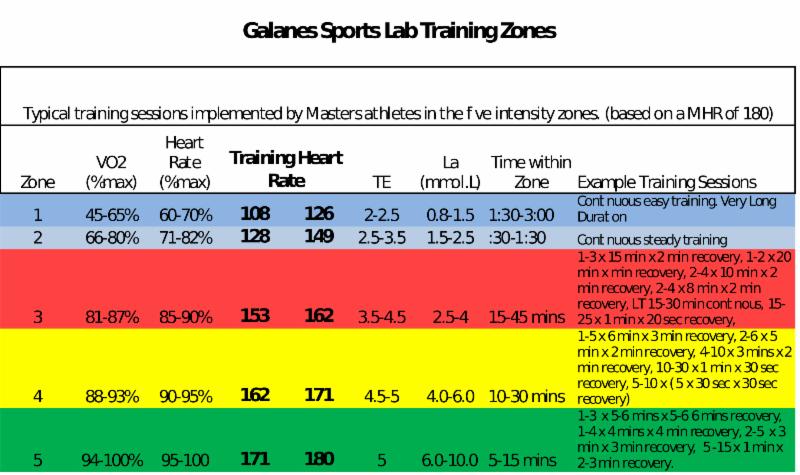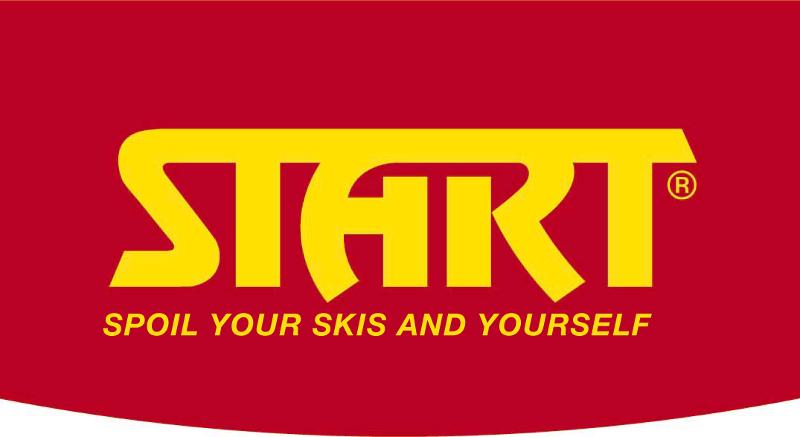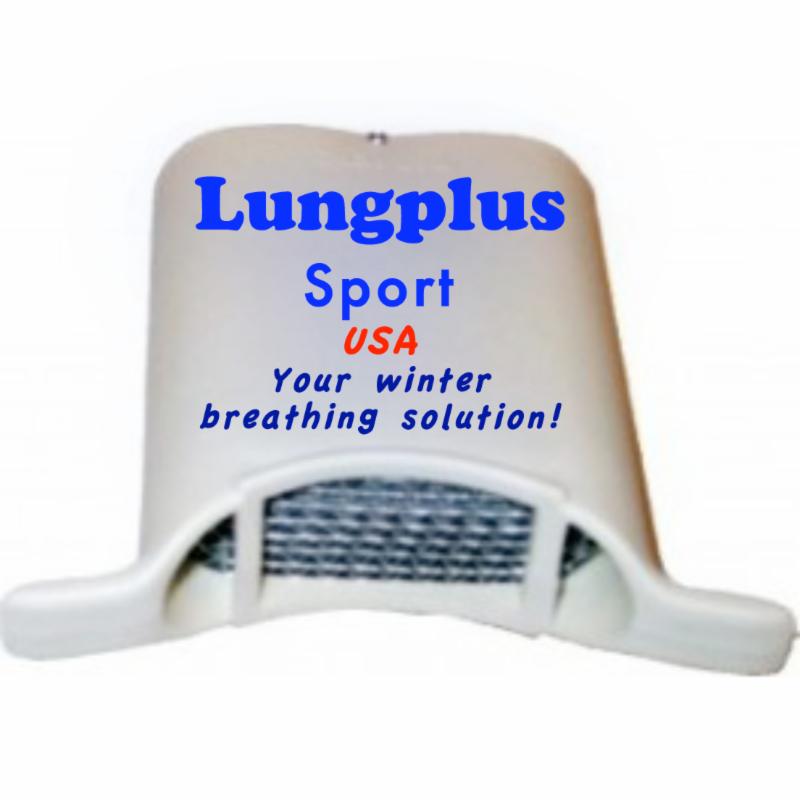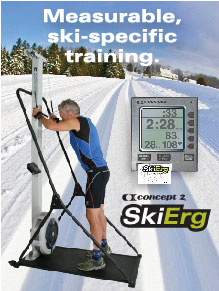|
Ask us, We Answer
Do you have a Nordic training, technique, equipment, travel, or event question?
Just email us at weanswer@skipost.com |
|
Stone Grinding
Hi Andy
How often should or can you stonegrind your skis.
Thanks Gab
Race skis should be stoneground when the bases need to be refreshed. Generally once a year in the spring to store them properly for the summer. In ski season if the bases do not hold wax, dry out quickly, have irregular colors on them then they are likely in need or fresh base exposure from stone grinding. Stonegrindings greatest asset is that it exposes fresh base material. Fresh base is like a fresh razor blade for shaving ones legs with it everything just glides better.
|
|
Brush Cleaning
What is the best way to clean a Brush, hand or roto?
The best way to clean a brush is to use a powerful shop vacuum, or get a new brush.
|
|
Candence
Hello!
I'm a subscriber to the SkiPost emails, and had a question that might be worthy of a response :)
In the summer I'm a cyclist, and the goal in cycling - for ultimate efficiency - is to keep a high cadence. How does this transfer to skiing, specifically striding? I'm guessing that one should do "what feels right," but I find that if I'm focusing on a strong kick and long glide, but cadence slows. Should I be working to keep a high cadence?
Thanks for any reply, you guys do a great job, please keep up the good work!
DM
Dear DM,
Jon Engen goes into greater detail below. but one ( large) difference between skiing and cycling is the lack of mechanical advantage in gears in skiing that you have in cycling. High RPM's in cycling are good and always obtainable because you can change gears and keep pretty much the same technique to maintain a set RPM. But in skiing you cannot change any actual gears you can only change technique. I feel most people do not glide enough and go to the next ski to quickly. (often because they do not work on their balance and a complete stride) If more people learned how to glide more they would enjoy skating much more ( and go faster.) Work on the big things first.
Andy at SkiPost
Dear Dan,
You correctly point out the importance of high cadence in efficient power generation on a bicycle. Without any numerical references, bicycle racers spin at higher frequencies than untrained cyclist for good reasons. Also, recent research shows that pedaling at slower cadence has its applications in bicycle racing. Keep in mind that cycling is minimally weight bearing.
Running is 100% weight bearing and each stride packs significant impact with the ground. As the forward displacement is minimal while on each foot, the quick turnover supports the "in-flight" travel better than longer strides. We clearly see elite runners move at quicker cadence than recreational joggers.
Although metabolically very similar to cycling and running, cross-country skiing is weight bearing and has the added dimension of gliding in a weight bearing position. Forward propulsion is generated with an impulse-momentum kick-exchange as an integral part of the glide, and all forward displacement includes ground contact. The whole body is at work with full foot to foot across-the-body weight shift in all classic and skate techniques except straight double poling. In other words, much more is taking place during each stride sequence than in cycling and running. Your priorities need to be:
- In faster fitness or competition style skiing, coordinate the posture, positioning and weight shift for sustainable, effective forward propulsion and work at a cadence allowing all these items to take place. Well trained athletes with advanced skill-set and overall physique will master a higher effective cadence than Joe Citizen skier.
- At slower speeds and lower output, maintain full movement, hold back on the forces put into each kick-exchange and maintain a swift, light rhythm.
- Your work frequency must be balanced with your skiing abilities, regardless where you are on the skill and fitness scale. Difference in body types, age, terrain, equipment, ski and snow conditions, etc., will also impact what is the most effective operating cadence.
In summary, good turnover makes for efficient aerobic continuity. However, the skier's priority in generating sustainable speed is using efficient ski motions; overall work efficiency is then balanced with a turnover matching the skier's skill set and physical ability.
I hope that helps - Good Luck!
Best for 2014, -jon engen http://www.xcskicoach.com/
|
|
Olympic TV Coverage
Like many nordic skiers, I have an alarming disinterest in television. I'd rather spend the time actually doing sports rather than watching others do them from my couch. But every four years the normal laws that govern the universe seem to change and with the advent of the Winter Olympics, nordic skiing is beamed into the living rooms of every red-blooded, cable-subscribing American. With American skiers poised to have some of the best results ever, I'm hoping that NBC's coverage of nordic events will be at an all-time high. What's the best strategy for watching the olympics online if one hopes to avoid paying for cable the other 50 weeks of the year? I'd be happy to pay for a month of service, but hate to be locked in for a whole year or two.
Thanks,
M T
M,
I watch the Nordic World Cup on line at http://www.frombar.com/ and watch Eurosport. It is unlikely this method will be allowed for the Olympics.But NBC has said that they will be streaming all events live all the time. You will need a service that allows this and a cable network subscription.So I suggest you pay for 1 month of cable TV with an Olympic package and then stream the Nordic action as it airs via your computer.
Andy at SkiPost
|
|
Max Heart Rate?
Hi Andy,
I have been curious about this question for many years. I will turn 70 next February. My Maximum heart rate 5 years ago was 172 and I have never seen it above that since. My anaerobic threshold measured only once several years ago was ~145. On that occasion, at a heart rate of 152, I had an exceptionally high lactic acid level measurement of 14. During interval training, I can rarely get my heart rate above 152 because it is exceedingly painful. I have been x-country ski racing for many years and, like many of us, I frequently document my races graphically on my computer via my heart rate monitor. I have no history of heart disease or cardiac arrhythmia that I know of.
During the Baldy hill climb in Sun Valley several weeks ago my average heart rate was 169 during the last 35 minutes of the race...i.e. 24 beats above my measured anaerobic threshold. Numbers similar to these are not unusual for me during a race, and are consistently the case if I am having a good race. How can this happen? My perceived exertion during a race is not any higher than during hard interval training ...Thanks for your input.
D P
DP,
You have raised some good questions that confuse and interest many athletes.
The first question to address is that of maximal heart rate. All of us are different in this regard and the common formulas used can be quite inaccurate. As most often referred to, maximal heart rate is the absolute peak heart rate that one can achieve. This can be measured best in a clinical/sports lab test setting or in an intense 2-3 minute effort in a field test. The test is inherently physically painful and mentally demanding. Because of this our ability to push ourselves truly to the max, in addition to loss of muscle function during such a test, become the limiting factors that may keep us from truly seeing a maximum heart rate.
The heart rates we see in races or training for longer time periods are not maximal and in many cases, are 10-20 beats under our true maximum heart rate. However, these racing heart rates can provide a specific range of heart rates from which we can establish training zones.
Over the years I have done hundreds, if not thousands, of lactate tests on myself and on athletes I was coaching. I believe that the traditional theories of lactate as a training marker and lactate thresholds are problematic. Individual lactate values can vary greatly depending on nutrition and level of fatigue among other factors. Thus, the process of identifying a true lactate threshold is inconsistent, not objective, and difficult to validate for field use. (These values can be interesting and valuable in a lab and research setting, when tracked along with O2, CO2 and ventilation.)
Individuals with predominately slow twitch muscle fibers and a strong aerobic capacity can have a very flat lactate curve with a very low peak lactate. Juniors with not as well-developed aerobic capacity can have an increasing linear lactate curve as can those athletes with a higher percentage of fast twitch muscle fibers. Everyone produces more lactate as exercise intensity increases, but the biggest variable seems to be that the more fit endurance athletes have the ability to remove or "shuttle" lactate to other muscles where it can be used as an energy source and remove it from the blood stream.
Lactate threshold has also been referred to as "maximal steady state", which I believe provides a more reasonable definition. Maximal steady state defines a point at which one can exercise for a relatively long duration without a corresponding increase in lactate. The length of the time period is variable depending on the level of fitness, aerobic capacity, the storage of muscle glycogen, and muscle fiber type among other parameters.
I have laid out some background information that will allow me to get to the specifics of your question. Your threshold was measured in a lab and reported to be 145. The methodology used to determine the threshold would have to be considered. Many labs simply graph your lactate relative to heart rate, speed, or watts and visually select a lactate threshold. Others may use the traditional 4 mm point, some use the 3 mm point, some use 1 mm above baseline and others may use a method called the Dmax to determine the lactate threshold. Based on my experience, I find the Dmax method to be the most consist and corresponds most closely with maximal steady state. Hopefully, you can see the challenges of lactate threshold here?
The peak lactate of 14 mm indicates that you may have a relatively strong capacity to produce power anaerobically. In other cases I have seen athletes who tend to perform their endurance training at too high a pace or intensity and have higher peak lactates. Without seeing the specific test and other physiological data this is difficult to confirm for you.
You also mentioned that in your lactate test several years ago you had a peak heart rate of 152 and that corresponded to your measured heart rates in harder interval training. Yet at the same time, when you are having a good race you have measured heart rates at an average of 169. This is difficult to explain, however I suspect it may be related to at least a couple of factors. Ski races and uphill races like the Baldy Hill Climb engage more muscle mass and could result in a higher sustainable heart rate, creating an increased load on the cardiac, pulmonary, and circulatory system. Other factors like the duration of the effort, and the level of muscular fatigue may result in a lower heart rate during interval training.
In the absence of the opportunity to confirm your lactate threshold which would require repeated long trials at the referenced lactate threshold intensity and then repeated test at intensities above and below the reference threshold to determine the true maximal stead state, I would utilize racing heart rates as your guide to training heart rates and just not think about lactate threshold. While there is abundant research indicating such a threshold exists, and some that it does not, there is little collaborating evidence that training at the anaerobic threshold has value in improving the speed and work done at threshold.
For informational purposes I am publishing a heart rate training guide I have developed over the years for use with masters athletes. I tend not to worry about finding a true maximum heart rate. Rather, I look at racing heart rates, your five kilometer (15-20 minutes) race average heart rate should fall at the top of Zone 4, while a 10-15 kilometer race (30-45 minutes) should fall at the bottom of Zone 4.
The reason I published this guide is that as we age our maximum heart rate decreases for a variety of reasons. I find that most masters athletes implement their endurance training at too high an intensity and this can be one of the reasons why we see reduced heart rates, due to heart rate suppression from fatigue, in interval training.
While my response may not completely answer your question, it is something I have experienced myself and seen in other masters athletes. In many cases it seemed to be most related to the duration of the effort and/or fatigue from too high intensity in day to day training.
Jim Galanes
Galanes Sports Systems
http://www.jimgalanes.com/

|
|
Klister VS Hardwax Ski?
I keep seeing some people describe their classic skis as either good for hard wax or klister. My question: what are the differences between the characteristics of the skis? Can one pair be good for both?
Thanks
I answered this in our Nov 7th and Oct 31 Skiposts But the difference is that Hardwax can be applied thinly so a hardwax (cold) ski will have a low riding kick zone camber to match the thin wax layers. Klisters go on thicker so klister skis have high riding camber (bridge) to keep the klister from contacting the snow during the glide phases.
You can get a Klister ski to work with hardwax (more wax layers) and you can get a hardwax skis to work with klister (extra short klister zone) but if you are a racer classic racing in all conditions you should have a Cold hardwax ski and a Warm klister ski.
Andy at SkiPost
|
|
Hydration and Feed
Dear Skipost,
I'm pretty familiar with refueling and rehydration while cycling but feel like I do a very poor job while skiing. I am wondering what you would recommend for refueling and rehydration on 10-20K training skate ski runs (easier when you can stop while training) vs. what to do while racing?
Thanks!
J H
Refueling while skiing is necessary, but often difficult. For 10km events you do not need a feed but for longer than 15km and especially marathon events feeding throughout the event is helpful and necessary. It is easy to carry a water bottle with energy drink but in most colder days the bottle is likely to freeze by the time you need it.
For carrying 1 bottle (start with a warm energy drink to keep it from freeing 2 hours later) I like the Salomon 45 hydro pack because it is easy to get the bottle in and out .http://www.salomon.com/us/range/trail-running-bags-packs.html
We have had good success with Avex's Peco's insulated water bottle with Auto spout. http://www.avexsport.com/water-bottles/22-oz-pecos-autospout-insulated-water-bottle-540.html
After a bottle the next race option for a marathon is to wear a Hydration vest. Year's ago The Factory Team partnered with Nathan Hydration and made a complete line of freeze proof Nordic products but unfortunately they no longer make these. We like some of the minimalist packs that UltraSpire makes like the Spry if you add on the insulated tube http://www.ultraspirestore.com/Spry-Select-Color-SP13-p/ua052xx.htm
My favorite piece for bladder systems is the Camelback RaceBack that incorporates a Bladder to the 1st layer so it does not freeze and ads little bulk. http://shop.camelbak.com/mens-racebak/d/1016
Let me know if this did not answer your question.
Andy at skiPost
Andy,
Thanks for the very detailed and informative answer. As a result of your information I took a flask with gel/water mix on my 25K training ski today and was very pleased to have not bonked near the end!
-Jeff
PS Keep up the great work with SkiPost!
Just an idea that's worked for me in response to hydration
I have a button hole sewn into my favorite race top (on the chest) to poke a hydration valve through
It keeps the hose and bladder warmer under a top
Cheers, Ay B
|
|
Baskets
SkiPost
This question has bothered me for quite some time and I have had considerable trouble finding an answer for it.
I have top of the line Swix poles with their small baskets. Frequently when I plant my poles they go through the top crust of the snow and plunge all the way down to the dirt. Yesterday I was skiing on the Birkie Trail and seemingly every other pole plant my pole tips went over a foot down into the snow. This made my poling almost worthless, especially when I was climbing hills.
I recognize that I am a bigger guy and I may put additional force into my pole plants but I have a hard time thinking that the elite skiers don't exert a ton of force on their poles when they are skiing in a race.
So is there a solution to this problem? Do the elites have different poles or different baskets to meet the different trail conditions? What are the options for master skiers like me? Do I just have to deal this problem or do I have options?
Thanks for your help.
Mike
Yes the tiny poles baskets that some race poles come with often are two small to work will in crust or powder conditions. And yes top racers will use larger baskets on soft tracks and tiny baskets on hard conditions.
Start Poles, who SkiPost works with, offers three pole basket sizes S, M, L. Team CXC in your neck of the woods relies on Start poles and i believe has the large basket on for most days and switches to eth tine basket if it is a top race that is hard pack. Swix that you mention offers quick change tips on their Triac pole. For most people I would just suggest the large baskets. Pole companies spec the smaller baskets on their poles so when you compare the poles in the stores the poles have the lower swing weights. Start makes a very pole glue that is very malleable when heated slightly all you need to do it heat the basket under hot water from a sick and twist the basket off and then you can twist the larger basket on and in 15 seconds when it has cooled it is solid in place again.
I hope this helps.
Start's small medium and Large baskets.   
Andy at SkiPost
|
|
Do it Yourself Race Wax Suggestions?
Dear SkiPost,
Should I follow the wax brand internet race wax suggestions or do my own?
We would always recommend that skiers learn how to make their own wax selections. If you learn what goes into a wax selection you can make a very good selection by yourself. If we teach you then you become a wax master for life. Most people can improve their ski's speed by focusing on their wax application (and a fresh ski base) and less in splitting hairs between a various wax options.
We will start simply this week for glide and then go in great detail in coming weeks.
Your end goal, in the most simple terms, is to get a glide wax that is slightly harder than the snow crystals you are skiing over. Too hard and you do not get enough lubrication and moisture management, too soft and you get too much snow crystal penetration and dry friction.
And while at the proper hardness you can most always select a High Flour and Pur Fluor top coat to speed up your skis they will do you the most good the wetter and/or dirtier the snow and the faster and/or farther you go.
To select a wax at the best hardness you will want to know Temperatures and Snow Age and Condition .
- Race time temps and overnight low. If it will be much colder (and clear sky) overnight than the air temp will be throughout the race then the snow will act colder than the race time temp. So look at the wax temp suggestions and if between two waxes select the colder wax. If you are in the shade or wind blown throughout the race the snow will also act colder than the air.
- If the snow is new (less then 24 hours) you can add a graphite underlayer to reduce static.
- If snow is very dirty or coarse/artificial you will want to use a Molybdenum wax (ie Start BM line). Moly acts as a dry lubricant to keep the dirt off. More Fluors help in dirt.
- The newer the snow,(and the less grooming) the sharper its crystals and the more exact you need to be with wax selection. New snow is less forgiving than old snow,
To select the necessary Fluor level you will want to know:
- Air humidity (and/or snow surface moisture) low, medium, or high:
- If relative humidity is low < 33% (you cannot make a snow ball and you did not need to scrape your car's windshield) Fluor is likely to add very little speed (unless the snow is dirty see below).
- If humidity is 33%< medium > 66% (you can make a snow ball with effort and it took you 1 minute to scrape your car's windshield) use a LF glider to manage medium moisture.
- If humidity is high > 66% (you want to have a snowball fight and you spent 10 minutes scraping your car's windshield) or snow is very dirty you want a HF glider (and Pur Fluor on top) to manage high moisture (and dirt).
- Dirt level.
- The dirtier the snow the more High and Pur Fluors help.
- Distance - the longer the race the more High and Pur Fluors help keep the skis clean and fast.
- Speed - the higher your average speed the more you want flours to manage the water layer that you develop at the higher speeds. A downhill race benefits from High and Pure Fluor than an uphill race.
If unsure: always wax colder, go for more flour, and brush more.
Always apply and iron in glide wax in a warm room and allow to cool down slowly and completely before you scrape and brush.
It is much easier to make a good to great wax selection every time if you use just on one wax brand. (SkiPost chooses Start Wax ) This way you can more simply select the temp, snow condition and moisture and then not have to interpolate between wax brands.
For added support from Start Wax you can
|
|
SkiTrax Fantasy FIS Marathon Cup
SkiTrax Fantasy FIS Marathon Cup 2013/14 International Contest in co-operation with FIS and the WorldLoppet Ski Federation adding excitement for xc ski fans around the world for these legendary races. The Grand Prize is a luxurious get-away at the fabulous Fairmont Chateau Lake Louise including an XC Ski 3-night package w/breakfast, Deli credit, Tour or Lesson, and two 60-minute spa treatments - a $1,550 value. read more and sign up here.
|
|
Lone Mountain Ranch
Big Sky, MT
Winter Trails Day- Saturday, January 11, 2014 10am-3pm
Winter Trails Day offers children and adults new to snow sports the chance to try snowshoeing and cross country skiing for free, and to discover the great fitness and social benefits with these easy-to-learn winter sports.Cost: Free ski pass, $5/ rentals, $5/ lessons, $10/ lunch. Contact: 406.995.4644 for more information.
|
|

NordicTown USA hosts 5th Annual Sun Valley Nordic Festival
The 5th Annual Sun Valley Nordic Festival runs from January 24 - February 2 in beautiful Sun Valley, Idaho affectionately known as NordicTown USA.
For 10 days, join skiers and families from around the world for the country's most exciting Nordic gathering. This year's festival features the best events yet!
* NEW! Opening Night Welcome Ceremony with entertainment, food and drinks, and Olympians Past and Present
* Ski the Rails, a skate or classic ski down the former railway turned bike path stretching the length of the valley
* The always-festive Galena and the Trails Benefit Auction
* "Skin it to Win it" an Alpine Touring Race up and down Dollar Mountain
* Twilight Ski and Dinner at magical Galena Lodge
* Sun Valley Ski Hall of Fame Alpine and Nordic Induction Ceremony
* Complete day of Sawtooth Valley events
* Panel discussion by Nordic Industry bigwigs at the Community Library
* The Downtown Jam/NordicTown USA Sprints and Fat Bike Competition
* The longest running Marathon Nordic race in North America, the renowned SWIX Boulder and Half Boulder Mountain Tour.
* And more!
Prize money for the 2014 Sun Valley Nordic Festival will total $8050 for the SWIX Boulder Mountain Tour and the NordicTown USA Sprints. The prize money package is made possible by a generous donation by the Sawtooth Club, a long time supporter of the SWIX Boulder Mountain Tour and the SVNF. Money will be awarded to the Top 10 Male and Female finishers of the SWIX Boulder Mountain Tour in the following increments:
* 1st place: $1000
* 2nd place: $700
* 3rd place: $500
* 4th place: $300
* 5th place: $250
* 6th place: $200
* 7th place: $150
* 8th place: $100
* 9th place: $75
* 10th place: $50
SWIX Boulder Mountain Tour Preems will total: $400
NordicTown USA Sprint Relays Prize Money will be awarded as:
* 1st place: $500
* 2nd place: $300
* 3rd place: $200
World-class grooming, 250+ days of sunshine each year and an incredible trail network featuring over 200 km of groomed Nordic trails, NordicTown USA is the place to be this winter.
Racers, non-racers and families will find excitement all throughout the 5th Annual Sun Valley Nordic Festival!
For a complete listing and descriptions of the incredible events visit nordictownusa.com or visit our facebook page: Sun Valley Nordic Festival.
|
|
Tour de Trapp 30k Freestyle
Trapp Family Lodge Outdoor Center, Stowe, VT
Jan 18, 2014
The marathon race is a lap format on a 7.5 km FIS homologated course which is also used for the 2014 Junior Nationals and the 2014 Ski-Orienteering National Championships. Plenty of excitement for spectators and skiers as they battle for the lead on each lap keeping the race fans on edge. 2014 will be the 2nd year for this event and this year we are printing up even more bibs after almost running out in our initial year. While this is a shorter race at 30 km or 15 km option, you won't be disappointed in the length due to the climbing, descents, and windy terrain. In 2014, Tour de Trapp is the season opener for the New England Marathon Series. Start is self seeded and the race begins at 10:00 am. Oh yeah, your entry fee includes a beverage of choice at the Trapp Family Lodge Brewery which has a selection of Austrian Lagers brewed on site. Awards for top 3 M/F for 30/15 km and raffle at Brewery at 1:30pm
Registration:
Registration fee $40 for 30 or 15 km, online registration at SkiReg.com, online registration closes Jan 17, at 5:00 pm. Late registration on site Jan 17, 4pm-6pm in yurt on-site or day of 8-9:30am with a $5 late fee. Limited waxing facilities, come prepared. No ski switching is allowed for points.
Start at 10am, day-of registration opens at 9:00am. www.nensa.net/calendar/
|
Noquemanon
January 24-26 2014
|
Lake Placid Loppet
Jan 25th, Mt Van Hoevenberg
The Lake Placid Loppet is one of the best events of its kind in the country. Over the past 30 years, thousands of skiers have enjoyed skiing and racing on the challenging Mt. Van Hoevenberg trails at the Olympic Sports Complex. The Lake Placid Loppet is conducted by the Olympic Regional Development Authority on the Olympic Sports Complex Cross Country Ski Trails. The Loppet and Kort-Loppet run on a slightly modified version of the 50km course constructed for the 1980 Winter Olympics making it one of the most challenging citizen races in the world. Skiers should consider carefully whether to enter the 25km or 50km event. However, many recreational skiers do participate at a less strenuous touring pace. http://www.whiteface.com/events/lake-placid-loppet |
|
Winter Trails Announces 2014 Regional Updates
Annual Winter Trails Day Scheduled for Saturday, January 11, 2014
FREE Snowshoeing and/or Cross Country Skiing Throughout North America
Winter Trails has updated details for its eight Anchor Site locations with complete listings including educational workshops, animal tracking and a variety of fun activities. The Anchor Sites represent the larger regional events for Winter Trails Day, scheduled for Saturday, January 11th, 2014, with over 100 other locations spanning the entire country from Massachusetts to Washington State. Anchor Site events offer additional winter-themed elements for a full day of activities.
Specifics include:
- Weston, MA - Great urban location at junction of Mass Pike and Route 495 very near Boston. This is a snowshoe only Winter Trails event, but also offers cross-country skiing at the location.
- Ski Liberty, PA - Beautifully situated at a downhill ski area with all full amenities, this is a snowshoe only event.
- Fort Snelling State Park, MN - Cross-country skiing will be added to this annual snowshoe program. Other activities include geocaching, naturalist-guided hike, build a quinzee, learn about skijoring and dogsledding, keeping warm in winter, cold weather camping, and more!
- Estes Park, CO - Part of a two-day celebration of winter with many other events happening with clinics and igloo building. This is a snowshoe only event.
- Soldier Hollow, UT - Site of the 2002 Winter Olympics. After cruising the trails you can settle in at the lodge for hot cocoa by a cozy fireplace.
- Tahoe Donner, CA - New Winter Trails location with over 200 km of trails, learn cross country ski and snowshoe skills with REI Outdoor School plus family-friendly activities.
- White River Sno Park, OR - A winter wonderland for the seasoned and first time winter outdoorsman, guided tours will be available from Adventures Without Limits.
- Snoqualmie Lodge, WA - Located near Snoqualmie pass, this is a snowshoe only event with educational clinics.
The wintertrails.org Web site is regularly updated.
|
|
Northeast Ski Trails
In the past couple of years I've built up a database of groomed ski trails in the Northeast. From high school 5ks to the largest touring centers at www.SkiTrailReport.com , I have a list of about 250 ski trails from Northern Maine to Ohio and West Virginia. It is also a forum for first-hand trail reports to be posted. Would you share it with your readership? It would be great to get the word out, especially with snow coming our way.
Many thanks,
|
|
West Yellowstone Nordic Events winter 2014
January 18 Spam Cup #2 Freestyle Race 11am start
January 19 Biathlon Cup #2 Pursuit Format
February 15: Spam Cup #3
|
About SkiPost
Cross-Country skiing's community lodge. Where knowledge and stories are shared. The goal of SkiPost is to make the sport of Cross-Country skiing easier and more enjoyable for all who choose to participate. If you have questions on Cross-Country Skiing email us weanswer@SkiPost.com and visit SkiPost.com
Enjoy Winter,
Andrew Gerlach
Director/Editor- SkiPost
|
|
|

Start Race Service Centers
Start's Race Service Retailers have just received this winter's fastest product. Visit a Start Race Service Center below
Wax Questions?
email us
|
Support Tomorrow's Nordic Stars Today
|

New World Wax table foot clamp
|

NONAME
Get your team custom unis from NONAME
and separate yourself team from the pack.
|

Ski Seefeld, Austria
February 26 - March 5, 2014
7 Nights, 8 Days of Skiing
|
|

CXC Academy
|
|

Get Lungplus to preheat your breath and save your lungs. Get a Lungplus and ski like the Norwegians!
For more information go to Lungplususa.com
|

SkiErg |
 Nordic Ski Colorado |

The one gift you receive at birth is time. You'll never have more than you have today. Find the Time. |
|